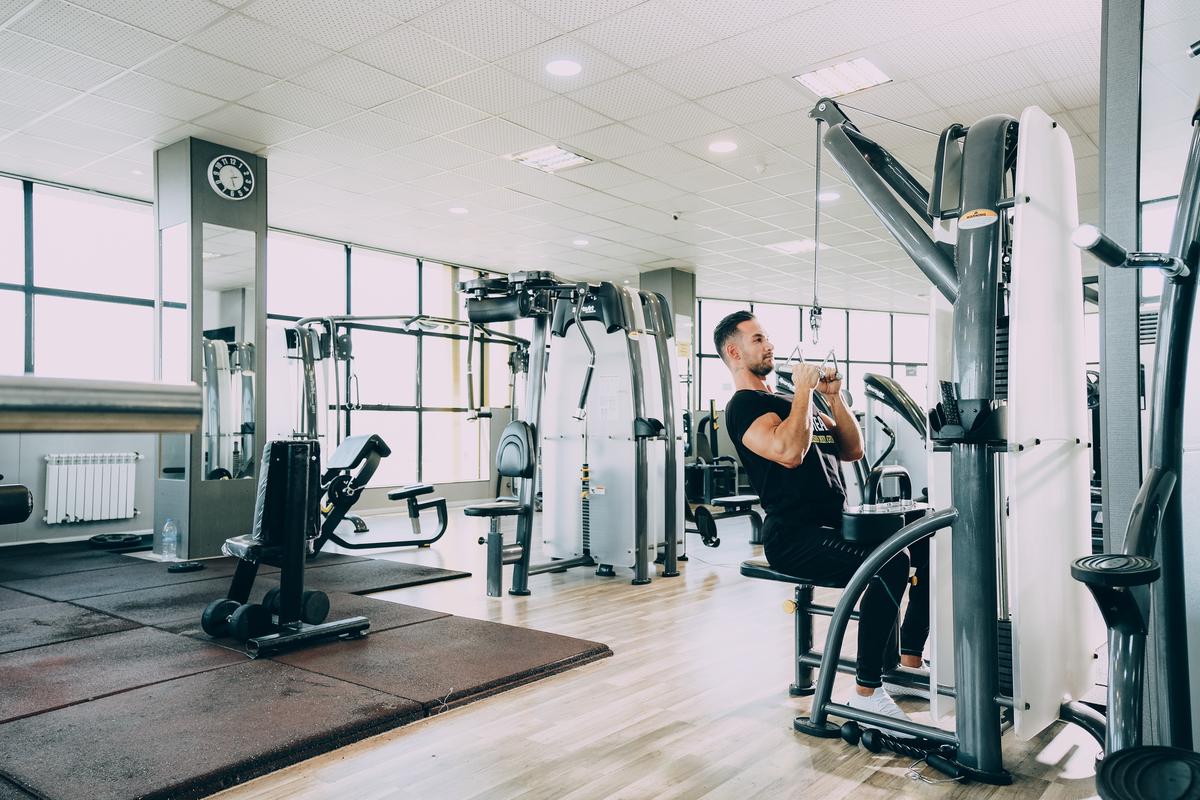Fitness and well-being often involve understanding and incorporating the right type of exercises that cater to one’s personal needs. For women seeking to lose weight, low impact exercises are a viable and beneficial option. This type of exercise promotes overall fitness, aids in weight loss, and reduces stress on joints, making it suitable for almost everyone devoid of their fitness level. It is further paramount to balance this routine by incorporating varying elements such as cardio, strength, and flexibility.
Equally important is the role of nutrition in this journey, a proper understanding of which could significantly enhance the results. In addition to this, learning about safety precautions for injury prevention is crucial to make the most out of the fitness routine. Mastering low impact exercises could provide one with an essential tool to maintain a healthy and active lifestyle.
Understanding Low Impact Exercises
Understanding Low Impact Exercises
Low impact exercises are forms of physical activity that put minimal stress on the joints. They are an excellent way for women to lose weight and stay in shape because they decrease the risk of injury, making them a preferred choice for individuals with joint issues or those new to exercise. These exercises work by emphasizing slower, controlled movements, rather than high-intensity, high-impact workouts.
Benefits of Low Impact Exertion for Weight Loss
Using low impact exercises for weight loss offers multiple benefits. For instance, they can burn a significant amount of calories depending on the intensity and duration of the workout. As you use more energy to move, the body burns more calories, contributing to weight loss. Also, they help increase metabolism. This is because as you exercise, your body requires more energy, which leads to an increased rate in metabolic processes.
A key benefit of low impact exercises is that they are more sustainable long-term, as they put less stress on joints. The gentler nature of these workouts means that they can be done daily without risking overuse injuries.
Promotion of Overall Fitness and Health
Low impact exercises aren’t just for weight loss, they also significantly contribute to overall fitness and health. They help improve cardiorespiratory fitness which protects the heart and lungs. Studies have shown that engaging in regular low impact activity can reduce the risk of heart disease and lower blood pressure. What’s more, they improve muscle strength, endurance and flexibility, all while reducing stress levels and boosting mood.
Examples of Low Impact Exercises
Several low impact exercises are highly effective for weight loss. Walking is a simple yet powerful exercise that improves cardiovascular health and aids in weight loss. It can be easily incorporated into a daily routine and requires no special equipment.
Another example is cycling; it’s easy on the joints and it’s an effective way to burn calories. Stationary bikes or cycling classes are excellent options.
Yoga and Pilates also fall under the category of low impact exercises. They both increase flexibility, promote weight loss, and can improve mental well-being.
Lastly, swimming is an excellent low impact exercise. This total body workout not only helps shed pounds but also improves lung function, cardiovascular health, and muscle strength.
In conclusion, low impact exercises are an essential part of a balanced fitness program. They provide a multitude of health benefits while mitigating the risk of injury. It’s always important to consult with a healthcare provider or a fitness expert before starting any new fitness program.

Developing a Low Impact Exercise Routine
Understanding Low Impact Exercises for Weight Loss
Low impact exercises are activities that preserve your joints and minimize impact stress, while still permitting a good burn of calories. Walking, swimming, cycling, and certain strength training exercises are common examples. They are also beneficial for women who are just starting their fitness journey or who have physical limitations or chronic conditions.
Balance of Cardio, Strength Training, and Flexibility Exercises
Creating a balanced exercise routine involves integrating the right mix of cardio, strength training, and flexibility exercises. Cardio such as walking or swimming improves heart health and aids in burning calories. Strength training exercises, such as light weightlifting, build muscles, which in turn increase metabolic rate, burning more calories even when at rest. Flexibility exercises like yoga help maintain mobility, reduce injury risk, and promote overall body balance.
Determining Exercise Duration and Frequency
The duration and frequency of exercise are essential factors to consider in your weight loss journey. The American College of Sports Medicine recommends moderate-intensity exercise for at least 150 minutes per week or vigorous-intensity activity for 75 minutes per week. However, these recommendations should be tailored to individual abilities and goals.
A typical low impact exercise session for weight loss may last for 30-60 minutes, depending on the type of exercise and fitness level. Light cardio like brisk walking could be done every day for around 30-45 minutes for those starting out or coming out of physical inactivity, whereas strength training could be done two to three times a week.
Benefits of Consistency in Workout Routines
Consistency is key in any workout routine, especially in a weight loss journey. It allows your body to gradually adapt to the physical demands of the exercise and eventually improve its strength and stamina. For longer-term weight loss and maintenance, your low-impact exercise routine should ideally become a regular part of your lifestyle.
Incorporating Rest and Recovery
Rest and recovery are also crucial components of any successful exercise routine. Muscles need time to heal and strengthen after workouts. Over-exercising without proper recovery can lead to injuries and burnout, which may necessitate breaks that could derail your weight-loss progress. Plan at least one to two days of rest each week to reap the maximum benefits of your exercise routine.

Photo by sammoghadamkhamseh on Unsplash
Nutrition and Weight Loss
Understanding the Role of Nutrition in Weight Loss
As women venture into weight loss activities or any other low impact exercises, one aspect that should not take the back seat is nutrition. A healthy meal plan complementing your physical activity routines promotes weight loss results and overall health. Contrary to popular belief, starving oneself to lose weight can be counterproductive. Instead, balanced nutrition helps provide your body with the essential fuels needed to exercise and promote overall health.
Balanced Food Groups and Weight Loss
A well-balanced diet comprises five main food groups consisting of fruits, vegetables, grains, proteins, and dairy. Each of these food groups plays a vital role in promoting overall health and aiding weight loss. Fruits and vegetables are crucial for weight loss because they are low in calories and packed with essential nutrients. They improve satiety, reducing the consumption of high-calorie foods.
On the other hand, whole grains, loaded with fiber, aid digestion, and also reduce feelings of hunger. Lean proteins aid the repair and growth of muscles, which can be particularly beneficial when exercising, while dairy, especially the low-fat variety, provides the necessary calcium for bone health.
Implementing Portion Control for Weight Loss
Portion control is a critical factor when creating a diet for weight loss. Quantity matters just as much as quality. Servings have grown over the years. Hence, understanding and controlling portion sizes can contribute to successful weight management.
One helpful tool in portion control is using the “plate method.” Here, half of your plate should be vegetables, a quarter should contain lean protein, and the remaining quarter should have whole grains. It visually helps to keep proportions in check, thereby inhibiting overeating and keeping calorie intake under control.
The Importance of Meal Timing in Weight Loss
Meal timing, often overlooked, can play a significant role in weight loss. Rather than skipping meals to save calories, regular smaller meals or snacks can help keep your metabolism active and blood sugar levels stable, reducing the urge to overeat.
It is also vital to notice how your meals are planned around your exercise routines. Having a light, carbohydrate-rich meal or snack around one to three hours before your workout can provide the energy required. A balanced meal with protein, after your workout, will help repair and build muscles.
In conclusion, nutrition is crucial in facilitating weight loss and complementing exercise routines for women. It involves understanding the food groups, exercising portion control, and mastering meal timing. A thoughtful and well-balanced approach to nutrition can help women achieve their weight loss goals.

Exercise Safety and Injury Prevention
Importance of Appropriate Techniques and Safety Measures
Low-impact weight loss exercises are a great method to maintain health and wellness while minimizing the impact on joints. They’re generally safer than high-impact workouts, but it’s still important to use the correct techniques and safety measures to avoid injury. This includes maintaining correct posture for each exercise you perform, utilizing the right exercise equipment, ensuring an adequate range of motion without strain, and avoiding sudden, jerky movements that could potentially cause injury.
Significance of Warming Up and Cooling Down
Warm-ups and cooldowns play a critical role in exercise safety. A highly effective warm-up increases your heart rate gradually, improving circulation to your muscles. With better blood flow, your muscles are less likely to tear or strain during your workout. Stretching during a warm-up also enhances flexibility, preparing your muscles and joints for the upcoming activity.
The cooldown, on the other hand, gradually lowers your heart rate and cools your body temperature. Just as warm-ups help prepare your body for the exercise, cooldowns assist in recovery. They involve light exercises and stretches to help reduce muscle stiffness and soreness, which can help prevent injuries.
Preventing Injuries During Low-Impact Exercises
To prevent injuries during low-impact exercises, it’s essential to pay close attention to your body’s signals. Over-exertion often leads to injuries, so listen to what your body is telling you. If you feel any pain or discomfort, it’s time to adjust your exercise or take a break.
While performing any exercise, make sure to use slow and controlled movements. Hasty and quick motions often lead to accidents and injuries. Furthermore, it isn’t unusual for enthusiasm about a new fitness routine to replace discretion about safety. Be careful not to overdo it, especially in the initial stages, and remember the importance of rest days. Your muscles need time to recover and repair themselves to avoid injuries.
Recognizing When to Stop and Rest
Understanding your body’s limits is critical for injury prevention in any type of workout, including low-impact exercises. Pay attention to signs of fatigue such as excessive perspiration, breathlessness, light-headedness, or any sudden discomfort or pain. These are indications that you need to pause and rest. No matter what exercise you are performing, quality takes precedence over quantity. It’s better to do fewer repetitions correctly than to force yourself to do more, risking injury.
Last of all, don’t neglect hydration
Maternal water is vital in maintaining muscle elasticity and joint lubrication, preventing injuries, and aiding in recovery.

Photo by rimakruciene on Unsplash
When embarking upon a weight-loss journey using low impact exercises, multiple aspects demand attention. Ensuring the correct blend and execution of exercises, guaranteeing safety to prevent any chance of injury, and complementing the workout routine with balanced nutrition are crucial. Every step during this journey, small or large, counts towards overall success.
The right approach to low impact exercises could empower women to achieve their weight loss goals, leading to wholesome well-being. Always remember, the journey to fitness is not a sprint but a marathon; consistency is key, and so is taking adequate rest when necessary. Embrace the process and believe in your ability to succeed, for the change begins with you.
Experience the power of Writio! Get high quality content personalized for your site instantly. This article was crafted by Writio.
Thank you for reading this post, don't forget to subscribe to our free newsletter
!

